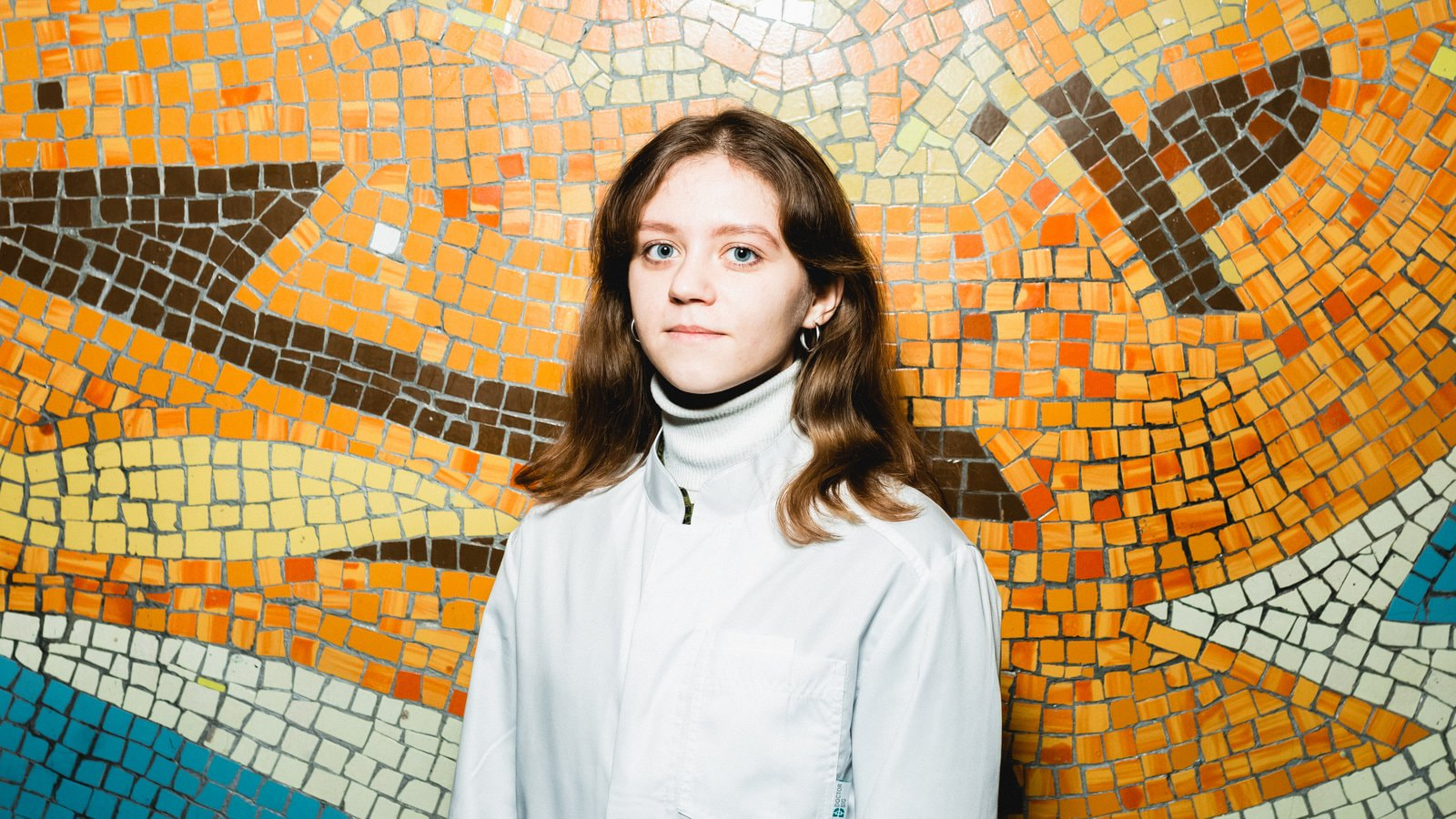Maria Mozgovaya’s Diary
December 27
Morning. The first work shift. What we have: a well worked out mediation scheme, a precise route. Coordinator: “Your first group is a group of partially sighted visitors. We should correct movement around the space and mediation”. Considering an alternative strategy. Off to work.
“Hello, my name is Masha, and I am going to be your personal mediator today”. The opening space. Graphics, sculpture, painting. Each piece is completed with a scent. The accompanying person describes all works in detail: who, what, where, when. I drop in comments. “What kind of odors do you think will surround us if we suddenly find ourselves at this market, next to Kustodiev’s Merchant’s Wife?”
And then the dam broke.
Partially sighted kids managed to remember all the tiny nuances of artworks and provided a range of meticulously defined scents as well as a comprehensive list of malodors to accompany each of them. With their help, we determined everything: the protagonist, the objects around them, the scene of action, weather conditions, time of the year, even the historical period. We built an entire storyline and did the same with every subsequent artwork. As our enthusiasm was gaining momentum, we flew into outer space next to Katie Patterson’s Candle without any “anchors”. And then everything was just like in the ether.
The group left in a happy and pleasant mood set by the “olfactory journey” we had completed together. And I was already starting to think how to repeat this experiment with people who use primarily visual experience as their starting point.
My second group that day included migrant children. Due to the language barrier, we chose the communication strategy of evaluating the smells’ attractive qualities. As soon as I realized it, I stressed out. Such a scenario was completely opposite to my preconception of ideal mediation in the context of smells. Some time later, however, I sensed with my own eyes that smells form an independent, at once mysterious and universal language that each of us is able to hear and comprehend. But this understanding is based not so much on cultural or national experiences, but on the person’s individual story. This assumption was proved many times afterwards as I talked to my fellow countrymen.
Both these groups turned up at a very good time, breaking to pieces all my pre-prepared mediation strategies. These people literally inspired me to return to the more usual tactics implying an open approach to situation and improvisation.
January 2
On that day I decided to experiment with the visitors’ direction of thoughts. We released our imagination into the open spaces of reflection and interpreted works through any random prisms that came to our mind. It allowed us to maximize the list of smells that could potentially “illustrate” our plots. I deliberately threw in stories radically opposed to the “key ideas” which we, the mediators, were introduced with during the preparation program. So, when we listened to a smell developed by Anna Agurina, only one plot from the list of dissimilar stories would break forth. And surprisingly, once again, every participant had their own unique plot. The one that matches the smell the most. For instance, one visitor heard the smell of wet grass after morning fog next to Yuri Kuper’s 1978 piece Balcony, while others smelled the smoke of a recently burnt down house.
January 4
In anticipation of Art Experiment, the historian and anthropologist Maria Pirogovskaya gave a talk on “The Proustian Effect and Olfactory Neutrality: An Introduction to Historical Aromatics” as part of the public program accompanying the project. Apart from Marcel Proust’s novel Swann’s Way, where this effect is introduced. As mediators, we referenced this effect on numerous occasions at different sites of the show. But Pirogovskaya also mentioned the novel Against Nature by Joris-Karl Huysmans in her talk, where the protagonist was extremely sensitive to smells and their interpretation. By December 4, I had read the novel and began referring to it in my monologues about the fantasy trip of Katie Patterson’s Candle. There is a scene in the novel where the main hero des Esseintes sprays essences one after another which paint a story in front of him. It seems to me that the artist Katie Patterson and the character des Esseintes are similar in their desire to construct experiences through smells.
January 10
I happened to have a double shift and spent the day in a mediation stream. It was then that the emotional content of our work came to the fore instead of information for me. It is my understanding of mediation that participants involved in the process must be charged with keen interest in the artworks, and a wish to figure out what’s going here should be settled in their mind. Such a task requires empathy, open-mindedness, flexibility and lots of energy from the mediator. Unfortunately, or fortunately, mediators are also humans, whose resources may run out and they may need to “breathe in silence” for a while. The ambiguous rule—that “you cannot give love and peacefulness unless you don’t have them in yourself”—is unshakable in this case. At such moments I was happy to work within the team of people that happened to get together at our Art Experiment. We managed to create an atmosphere where everyone is ready to adjust and back up a colleague. Only one thing remained problematic—not being able to help because someone else had already done it.
